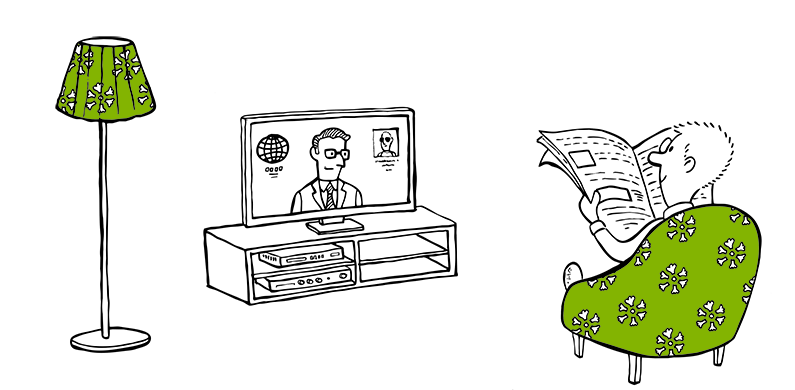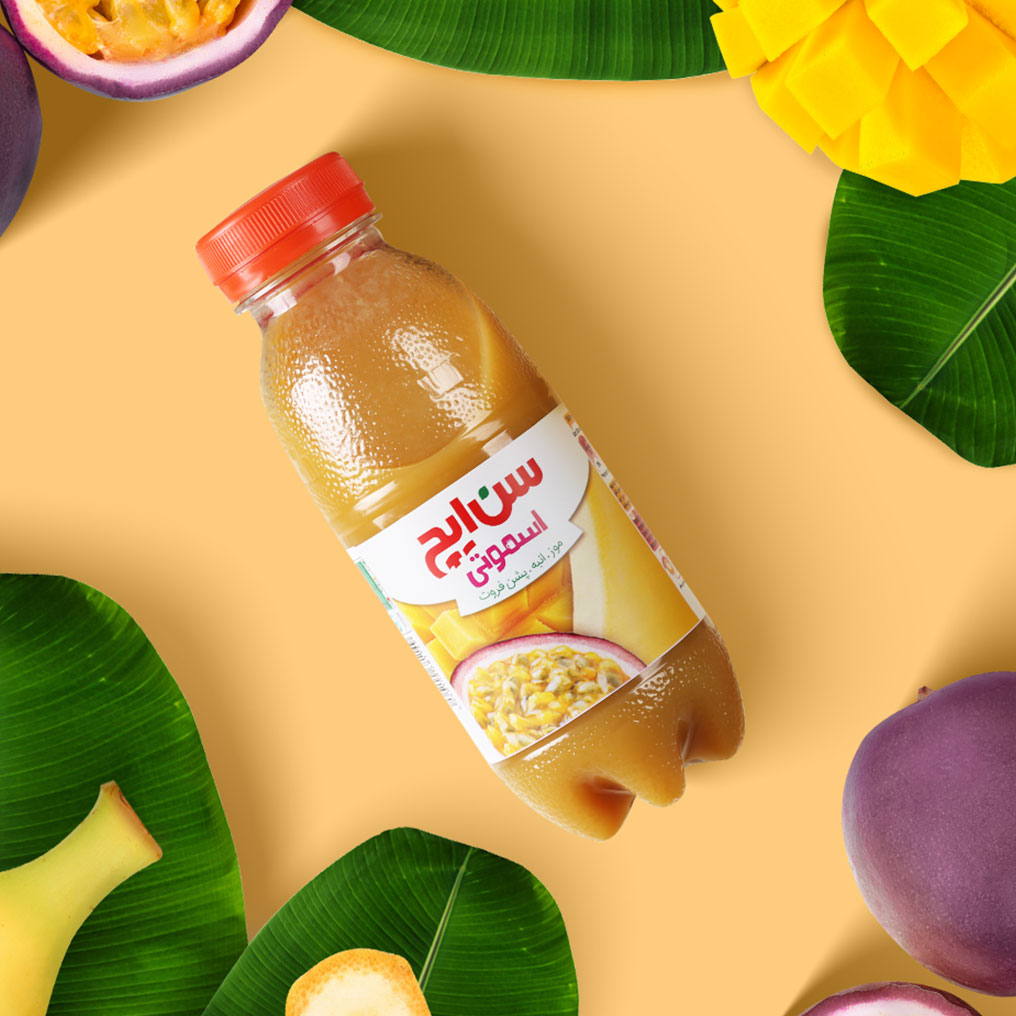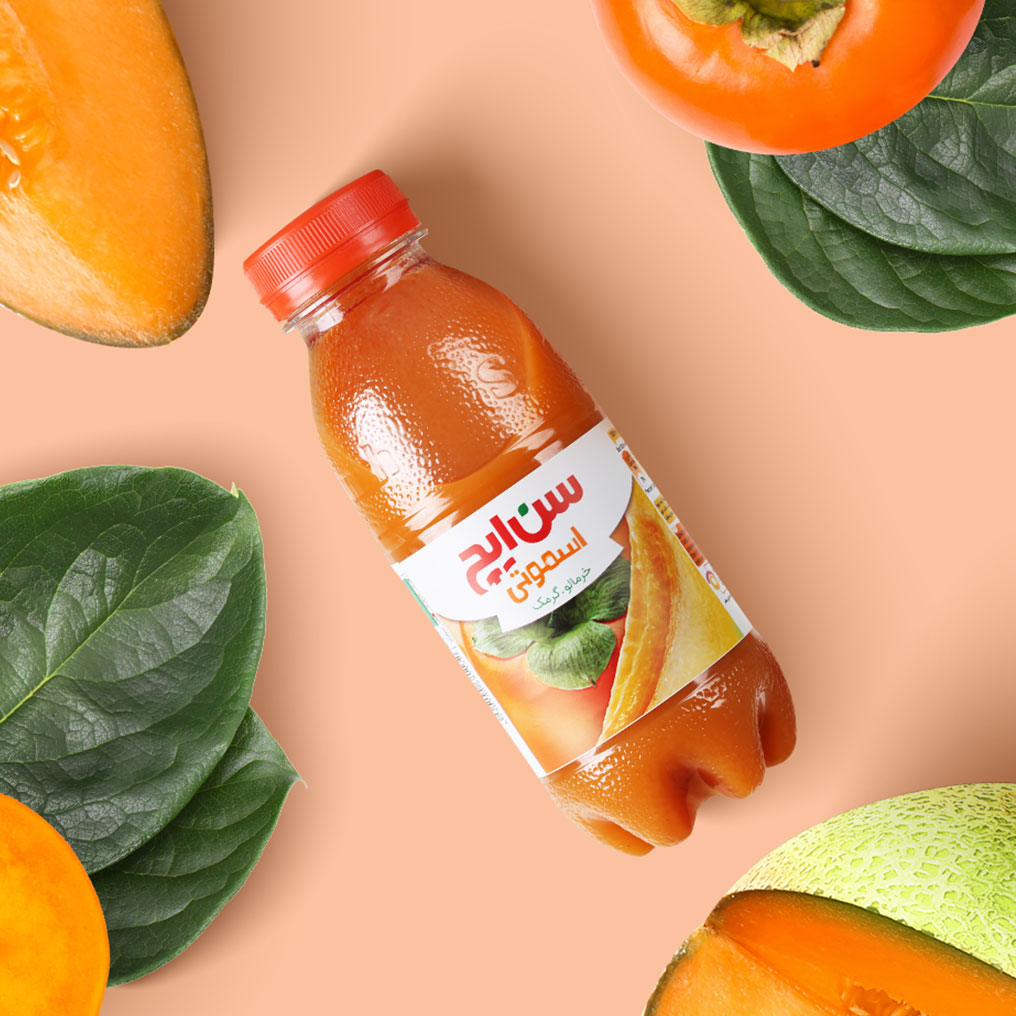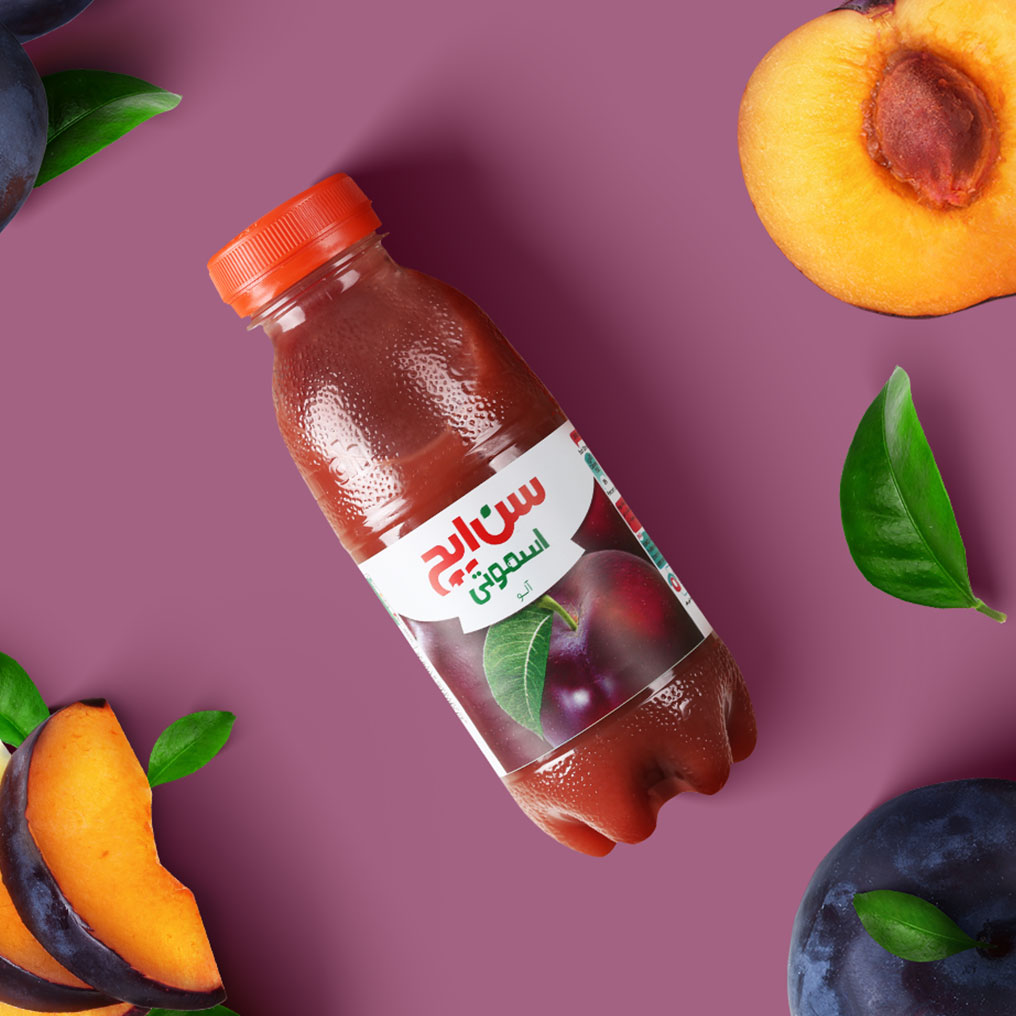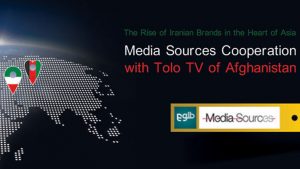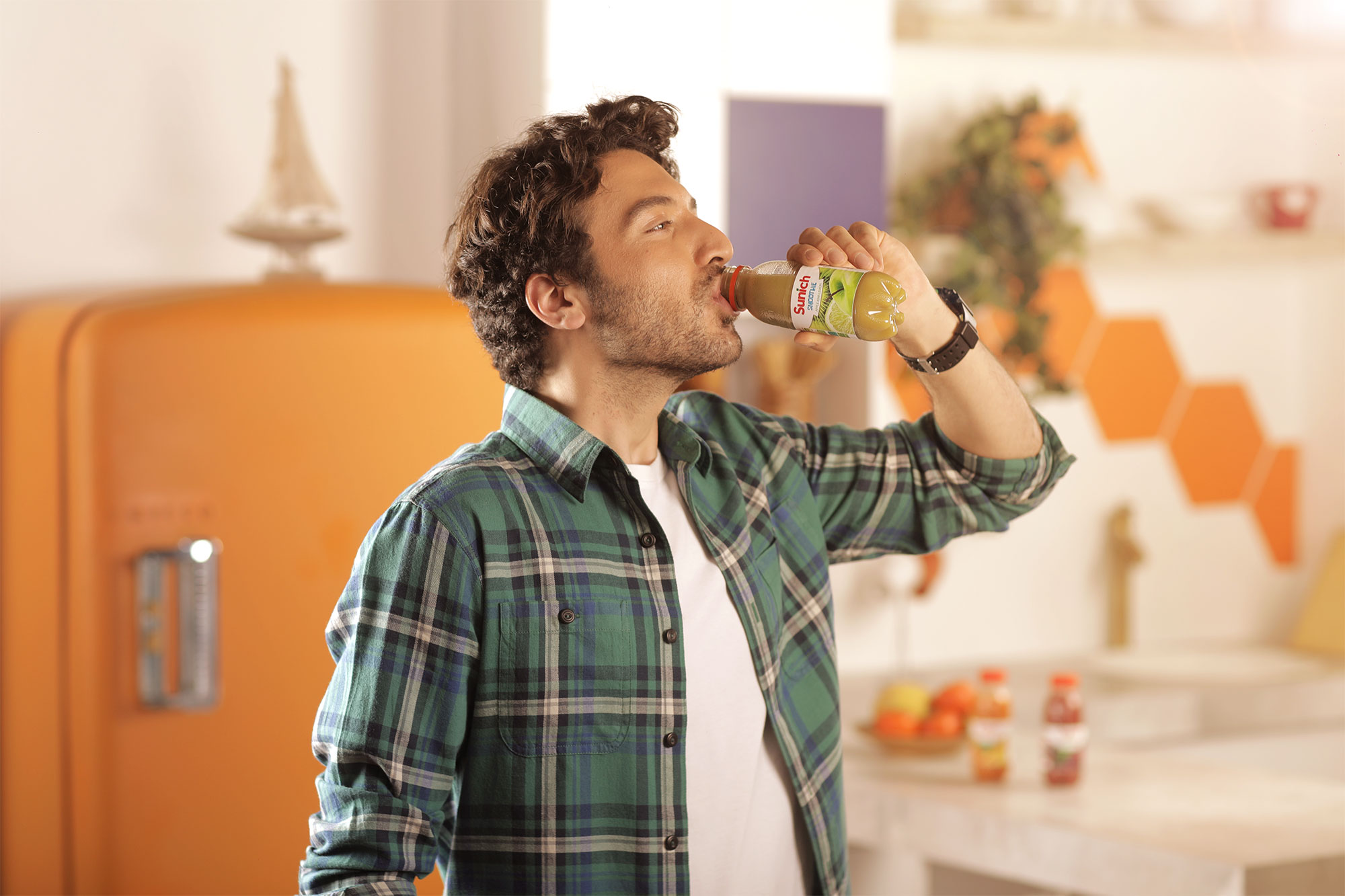
Magnolia in ‘Smoothie Your Time’ Campaign
Smoothie is a new product of the Sunich brand which is supplied to the market in four combinations of different flavors. For the initial introduction of this group of product, Sunich has launched promotional activities in social networks. To get detailed information about smoothie promotional plans, we interviewed the Strategy and Creativity team of the Magnolia Advertising Agency for the presentation of Smoothie (Pouya Sabbagh, Project Manager and Amid Rashedi, Creativity Manager).
Q: Would you please tell us about the Sunich smoothie campaign strategy?
Sabbagh: For strategy formulation we were faced with a product that was introduced to the market for the first time and was at its initial stage of supply into the market. The main purpose was to find a position for the product as a snack among the audience. Of course, the manufacturing stages of the product were so precise that had turned it into a snack and we could extract the properties of a snack from it.
When you intend to formulate a campaign strategy for launching a new product, we need to have a deep look at the market and its audience. We needed to scrutinize the audience and the market for this product so that the creativity and ideation team, based on the results, could prepare a correct message. There was no rival product in the market. Therefore, we focused on the view of the audience and conducted comprehensive and qualitative research. In this research, we conducted in-depth interviews with a large number of audiences.
The sentences that the audience used were interesting. The participants in the study were two groups: Those who did not know the smoothie; and those who would use it as a snack. For example, some people would say that the smoothie is delicious and healthy, but because it was hard to prepare, they have never made the smoothie themselves. Most of them would order the smoothie while going to a cafe. In the continuation of the research, we tried to cast a deeper look into the snacks and the opinion of the people about it. In this research work, the opinion of some people helped us greatly in designing the main strategy and idea. For example some people would say when they go home from workplace they would always go to the refrigerator but never find anything exciting in the fridge. It was an interesting point that might happen to everyone. Most people would go to the refrigerator aimlessly during the daytime and would look for exciting eatables: An exciting edible that is usually hard to make!
Therefore, the strategy moved toward the moment when we all stand in front of the refrigerator but do not know what we want. Accordingly, such a strategy entered into the stage of ideation and the core of the idea was formed.
Q: Would you please explain the steps involved in the campaign ideation?
Rashedi: The ideation stage of the campaign began with this point that what story we could create about presentation of the Sunich smoothie product: A story through which the audience is involved in the product. The product was a snack that had a distinct position and the audience was usually familiar with it from the cafes.
We had to link the product to a tangible reality because in reality it must be bought and consumed by the audience. We had to keep distance from the stereotype advertising messages and design tangible and true messages. The idea of the fridge was also shaped in this way: An idea in which a person would take a passive look at the refrigerator and close the door indifferently and walk away. We all have had such an experience. People who would open the fridge door and do not exactly know what to take and eat. Therefore, it was decided to start the campaign story from the door of the refrigerator. To begin with, we decided to tell the story through a video that has a great appeal for the audience. We were trying to make a video that the audience amid the broil of the social networks would stop for a moment and look at it instantly. It was a hard job, because the product was new and the audience had no awareness about it. The video was defined precisely on the digital platform.
First, the video teaser was released through which the question was shaped in the minds of the audience. Subsequently, different videos based on a story were released with an aim of involving the audience with the product emotionally. Accordingly, posts were also published in accordance with the target.
Q: Would you please comment about the audience in the campaign?
Sabbagh: To answer this question, it is better to go back to the strategy. To contact the audience, we asked a question to start with. We asked the question from the audience through the video teaser. In the question we asked the audience whether they could remember the moment they stood in front of the refrigerator and did not know what they wanted: We have an answer to your confusion. In the second video, the product was unveiled and questions of the audience were answered. In the videos, the most important features and benefits of the product have been shown to the audience. In one of the videos, the ease of using the product was shown to the audience by locating people in different situations. For example, we showed in the video using the product while playing, or at workplace, etc. In the second video, we dealt with the difficulty of making smoothies which had been referred to by most people and showed the Sunich smoothie as an affordable option. Beside these videos, a different content including photo, motion graphics, and so on was also released: A content that in different forms shows the audience ways to use the product.
Q: On what basis did you choose the participants in the research?
Sabbagh: As it was mentioned before, the product can be used by all age groups. But the juvenile and the youth group was at the core of attention and we had to focus on this group so that the creativity group would look at the issue from their point of view. The consumption method of this group would also affect the other people. The people present in the research session were those between 15 and 25 years. We tried to have the participants from any social status, people like university students, employees, and housewives and so on.
Q: Tell us about the image path you went through in the campaign?
Sabbagh: The image path that was taken in the campaign was exactly in harmony with the audience. After watching the images and the videos, the audience would be charged with a sense of happiness and liveliness. Creating such a feeling in the audience was entirely through the use of images, colors, and the music in videos.
Q: Would you please explain the campaign theme?
Rashedi: The theme was “Smoothie Your Time” – A theme with the concept of time, but not at a specific time. Because every audience has their own time to have the snack. Therefore, the slogan in question would best convey the message of the campaign to the audience and would tell the audience they could take the smoothie whenever they want to.
The slogan had the potential to play with under different situations and it made it possible to use smoothie slogans such as at the time of work, smoothie at the time of play, etc., along with the images.
Sabbagh: The slogan had a great flexibility and we could easily use it in different situations. For example when we were reminding the audience of the presence in front of the refrigerator, it was the best time to remind them that the smoothie has harmonized itself exactly with your time. The slogan played the role of an alarm. Based on this, a jingle was designed and was used in all the pack shots of the videos. The original element of the jingle is the smoothie alarm. As a result, whenever there was talk on using the smoothie, the alarm would be sounded. In designing the music, we also tried to strengthen the ‘Smoothie Your Time’.
Q: Tell us about other promotional activities on social networks?
Sabbagh: We were trying to have more audience visit the content of the product. In this regard, we used the Instagram ads. In line with this, we cooperated with a number of influencers. The influencers also introduced the smoothie as a snack in their living environment. For example, an influencer in his house and another person during a trip enjoyed having the smoothie. By doing this, we reminded the audience of the consumption cases. The influencers helped the product to be more attractive. The influencers were briefed by us and produced the content themselves. The influencers were chosen on the basis of the lifestyle and the group of smoothie audience.
Q: Why in your ideation you didn’t use the competition to attract the audience?
Rashedi: Holding a contest is a method that is used by most brands. But in the case of the smoothie, we had a successful experience and attracted many audiences without holding any competition and awarding any prize. Of course, such an effort had its specific risk. The extent of Sunich look towards advertisements helped us greatly to accomplish such a task.
Sabbagh: When you move on the basis of strategy, you will be saved from going the wrong way. The exact implementation of the strategy in the Sunich campaign brought us closer to success. A brand with the long record of Sunich considered a right strategy for the presentation of the smoothie campaign and achieved the desired result.
